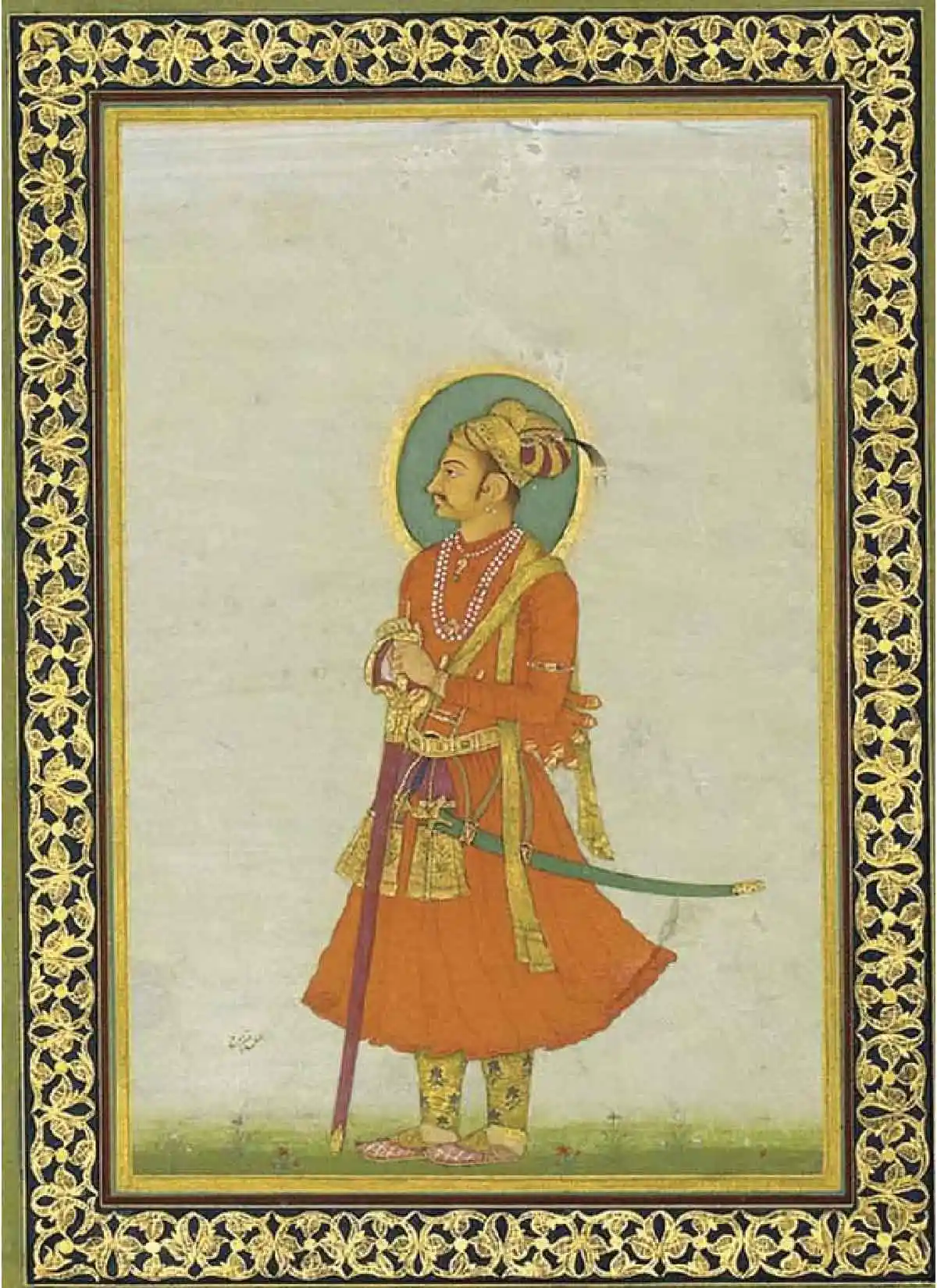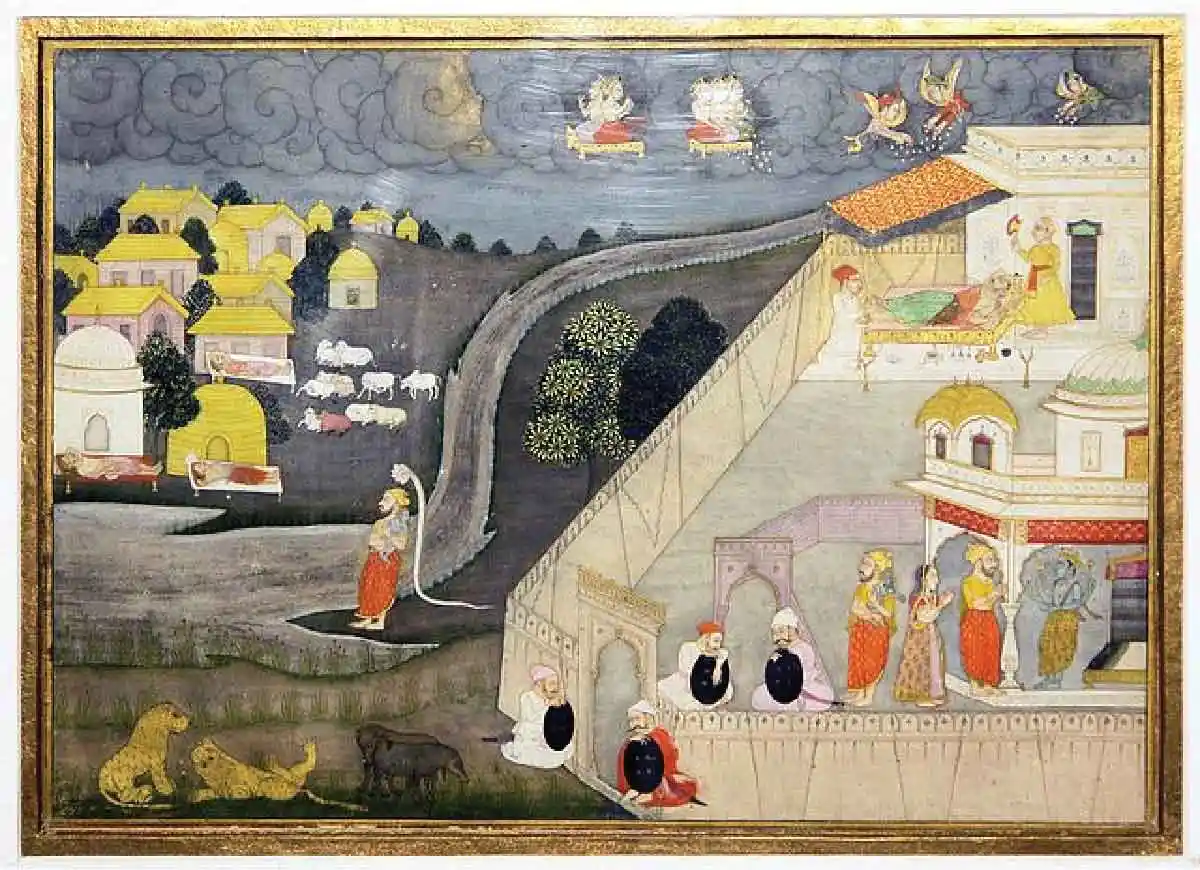The Artists of Bikaner and their Miniature Treats
The Bikaner School of Miniature Paintings held up their pride when it came to their artists. Their absolute Mughal influence, their Mandis, and their practice of Gudarai were all unique and interesting anecdotes that have brought about their fame. Read ahead to discover more!

Raja Karan Singh Miniature (Father of Anup SIngh), Source: Wikimedia Commons
The Bikaner School of Miniature Painting was prominent under the Rajasthani School of Art and it flourished greatly under the rule of Anup Singh, Maharaja of Bikaner. This state was always an important state under the Mughals throughout the sixteenth and seventeenth centuries and therefore the influence is evident in its artistic style and compositions. Among all the sub-schools, the influence on artistic language is the greatest for Bikaner.
The Royal archival day-to-day account diaries (bahis) and numerous inscriptions on Bikaner paintings make this one of the best-documented schools.**
Most of these inscriptions were in the Marwari dialect, but occasionally they were also written in Persian script. They revealed the dates and names of artists, not to mention the places where productions took place. Apparently, there were interactions between visiting Muslim painters from nearby Rajput states and local novices who, later on, adopted Islam and were called Ustas. Political successes continued to draw more wealth, which inadvertently led to an art boom, attracting other Hindu and Jain painters as well.
During Karan Singh’s rule, he employed Ustad Ali Raza, a master painter from Delhi. It was his earlier works that represented the beginning of the Bikaner school. This can be thus dated back to almost the 1650s.**
Ruknuddin (whose ancestors had come from the Mughal court) was the master artist, whose style was an amalgamation of the indigenous idiom with Deccani and Mughal conventions. During Anup Singh’s rule, he painted significant texts, such as the Ramayana, Rasikapriya, and Durga Satpsati. Along with him, Ibrahim, Nathu, Sahibdin, and Isa were other well-known painters in the atelier
In Bikaner, artists worked cooperatively in “studios” called mandis. From inscriptions, it appeared that Ruknuddin, Ibrahim, and Nathu ran some of these studios. Their works can be characterized as professional: at the end of each project, an inscription naming the head artist who worked on a piece and the date was made. This resulted in the work of students to carry their teachers' names. However, it seems that the teachers occasionally added finishing touches to their students’ work. The term for this was gudarai, which meant to ‘lift’ – it referred to touching up a painting without having created it.
Fewer than five hundred artists worked at the Bikaner court. The royal family collected over fifteen thousand paintings, and it had its own library of manuscripts. Most of the works were done on paper, but wood, hides, cloth, and ivory also served as canvases. Remains of these works still exist in the Bikaner fort.
Today we know that wall paintings, painted doors and furniture, and sculptures were also made. Talented artists received recognition and rewards for their work: money, land, and secure employment.
Therefore, it is evident that, unlike the scenario of today, art and painting were a prosperous field of work, not only in prestige but also in monetary gains. The Bikaner school treated their artists with respect and pride and made sure they were recognized for their efforts.
What sets apart the artists from the Bikaner school is that they had a custom of having portraits of themselves. Most of these portraits were even inscribed with information about the ancestry of the artists. This proves how important they were in their time as well.
Art is an absolute medium to grant eternity to anyone and anything, we can always be grateful that the people of History recognized the same and left us tales of many lived truths to uncover.

Vishnu revealing his divinity to Vasudeva and Devaki, based on Bhagavata Purana, Source: Wikimedia Commons


